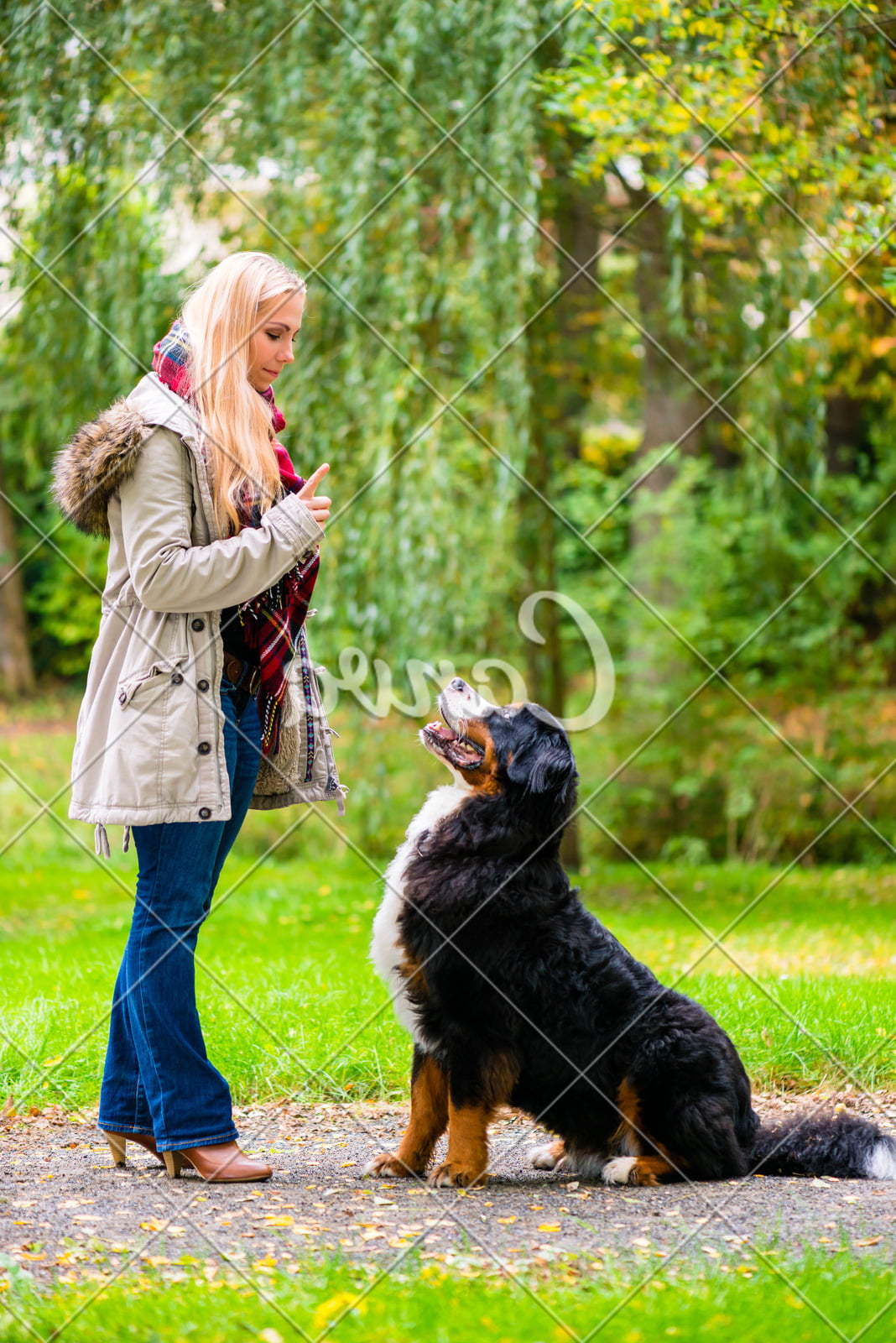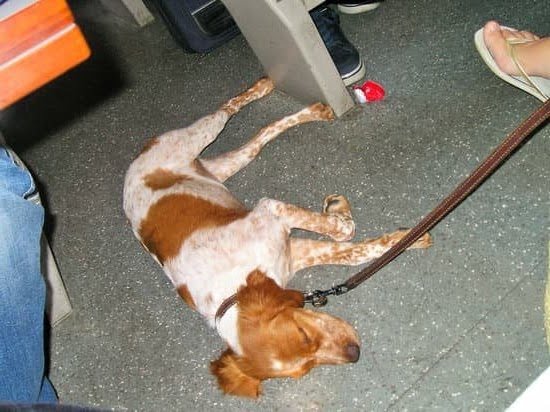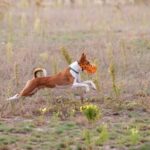Are you wondering how to train a dog not to hurt chickens? Many dog owners face the challenge of keeping their dogs from chasing or harming their backyard chickens. This can be a source of stress and worry for those who want to raise chickens while also having dogs as pets. In this article, we will explore the various strategies and techniques for training your dog to coexist peacefully with your chickens.
The importance of training your dog not to hurt chickens cannot be overstated. It is crucial for the safety and well-being of your feathered flock. Understanding why dogs might chase or harm chickens, as well as learning effective training methods, can help create a harmonious environment where both dogs and chickens can peacefully coexist.
In this article, we will delve into the behavior of dogs, discuss the reasons behind their instinct to chase chickens, and explore positive reinforcement and consistency as key elements in effective training. Additionally, we will provide tips on introducing dogs to chickens in a supervised manner and creating safe spaces for the birds.
By following these guidelines, you can establish boundaries that will keep your chickens out of harm’s way while fostering a peaceful relationship between your canine companion and your feathered friends.
Importance of Training
Keeping chickens safe from potential harm by dogs is an essential aspect of responsible pet ownership. It is crucial to understand the importance of training your dog not to hurt chickens in order to maintain a peaceful and safe environment for both your furry and feathered friends.
There are several reasons why it is crucial to prioritize training your dog not to harm chickens. Firstly, allowing a dog to chase or harm chickens can result in injury or even death for the birds. Additionally, it can lead to increased stress and anxiety for the chickens, impacting their overall well-being and egg production. Furthermore, an untrained dog posing a threat to the safety of the flock may cause disruptions in their natural behavior and routine.
To effectively address this issue, it is important for dog owners to invest time and effort into understanding their pet’s behavior and instincts. By recognizing why dogs might be inclined to chase or hurt chickens, owners can develop effective training techniques that cater to their dog’s specific needs while ensuring the safety of the chicken flock.
- Establish clear boundaries: Set designated areas for the chickens where they can roam freely without being threatened by the presence of a dog.
- Utilize positive reinforcement: Use treats, praise, and rewards as part of a consistent training regimen to encourage desired behavior from the dog when around chickens.
- Consistency is key: Ensure that all members of the household adhere to consistent training methods and rules regarding interactions between dogs and chickens.
By implementing these strategies, pet owners can create a harmonious environment where dogs and chickens coexist peacefully. Ultimately, prioritizing the training of dogs not to harm chickens serves as an important step towards maintaining safety and peace within a multi-pet household.
Understanding how important it is beneficial in practicing effective steps on how train a dog not hurt chicken. Taking precautions during training will ensure that you are nurturing healthy relationships between all animals under your care.
Understanding Dog Behavior
Instinctual Prey Drive
One of the main reasons why dogs might chase chickens is due to their natural instinctual prey drive. Dogs, especially those with hunting or herding backgrounds, have an innate desire to chase after small animals such as birds. This behavior stems from their genetic makeup and can be difficult to suppress without proper training and understanding.
Lack of Socialization
Another reason why dogs may harm chickens is due to a lack of socialization with these birds. Dogs that have not been introduced to chickens at a young age or have not been properly trained are more likely to see them as prey rather than companions. This highlights the importance of early exposure and positive experiences between dogs and chickens.
Lack of Boundaries and Discipline
In some cases, dogs may chase or harm chickens simply because they have not been taught appropriate boundaries and discipline. Without clear guidance from their owners, dogs may engage in behaviors that are potentially harmful to other animals. This further emphasizes the need for consistent training and clear expectations for proper behavior around chickens.
Understanding the reasons behind a dog’s behavior towards chickens is crucial in developing effective training techniques. By recognizing the instinctual drives, lack of socialization, and the need for boundaries, dog owners can tailor their approach to training in order to create a safe and harmonious environment for both their dogs and their chickens.
Training Techniques
When it comes to training a dog not to hurt chickens, positive reinforcement and consistency are key. Dogs respond well to rewards for good behavior, so using treats, praise, or toys can be effective in teaching them to leave chickens alone. It is important to immediately reward a dog when they exhibit the desired behavior of ignoring or staying away from the chickens. This will help them associate that behavior with a positive outcome.
Consistency is equally important when training a dog. Enforcing consistent rules and expectations will help the dog understand what is and isn’t acceptable in their interactions with the chickens. This means that all family members and anyone else who interacts with the dog should be on the same page when it comes to training and reinforcing boundaries around the chickens.
It’s also essential to avoid using punishment-based training methods when teaching a dog not to hurt chickens. Negative reinforcement or punishment can cause fear or anxiety in dogs, which may actually exacerbate behavioral issues rather than resolve them. Instead, focusing on positive reinforcement can create a more harmonious relationship between dogs and chickens.
| Training Technique | Importance |
|---|---|
| Positive Reinforcement | Rewards good behavior and fosters a positive association with leaving chickens alone |
| Consistency | Helps dogs understand boundaries and expectations around chickens, making training more effective |
Introducing Dogs to Chickens
When it comes to training a dog not to hurt chickens, it is crucial to introduce the two animals in a controlled and supervised environment. Here are some tips on how to properly introduce your dog to chickens:
- Start with short and structured introductions: Begin by allowing your dog to see the chickens from a distance while on a leash. This will help your dog become accustomed to the sight and presence of the chickens without being able to chase or harm them.
- Use positive reinforcement: Throughout the supervised encounters, be sure to reward your dog for calm and non-aggressive behavior around the chickens. Positive reinforcement such as treats, praise, or playtime can help your dog associate good behavior with being around the chickens.
- Monitor body language: Pay close attention to your dog’s body language during the introductions. Look for signs of curiosity, anxiety, or aggression. Understanding your dog’s cues will help you gauge their comfort level and make any necessary adjustments during training.
By following these steps, you can gradually acclimate your dog to being around chickens and reinforce positive behaviors that will help prevent any harm to the birds. Remember that consistent supervision and patience are key when introducing dogs to chickens.
As you continue training, keep in mind that every dog is different, and what works for one may not work for another. It is important to stay patient and persistent in your efforts as you work towards creating a harmonious relationship between your dog and chickens.
Setting Boundaries
Dogs and chickens have a complicated relationship, and setting boundaries is crucial to creating a safe environment for your chickens. Here are some important considerations when it comes to setting boundaries for your dogs and chickens.
Creating Physical Barriers
One effective way to set boundaries is by creating physical barriers between your dogs and chickens. This can include installing fences or using chicken wire to separate the two animals. By doing so, you can prevent direct contact between them, reducing the risk of any potential harm.
Training Your Dog to Respect Boundaries
Training your dog to respect the designated areas for the chickens is essential in preventing any potential harm. Using positive reinforcement techniques, such as rewarding your dog for staying away from the chicken coop, can help reinforce these boundaries. Consistency is key in this training process.
In addition, teaching your dog basic obedience commands such as “leave it” or “stay” can also be helpful in ensuring that they understand and respect their boundaries around the chickens.
Providing Safe Spaces for Chickens
Creating safe spaces specifically designed for your chickens can also help establish boundaries with your dog. This can include providing elevated roosting areas or secure coops that are inaccessible to dogs. By offering safe spaces for your chickens, you can minimize the risk of confrontation with your dog.
By implementing these strategies and remaining consistent with training, you can effectively set boundaries between your dogs and chickens, ultimately creating a safer environment for both animals. Remember that patience and perseverance are key components in successfully training a dog not to hurt chickens.
Practice Makes Perfect
Training a dog not to hurt chickens requires consistent training and a lot of patience. Dogs are naturally curious and may see chickens as prey, so it’s important to understand that changing this behavior will take time and effort. By being consistent in your approach and remaining patient, you can effectively teach your dog to coexist peacefully with your feathered friends.
One of the best ways to train a dog not to hurt chickens is through positive reinforcement. This means rewarding your dog for good behavior around the chickens. For example, every time your dog ignores the chickens or behaves calmly around them, give them a treat or verbal praise. This will help reinforce the idea that being gentle around the chickens brings positive consequences.
In addition to positive reinforcement, consistency is key when training a dog not to hurt chickens. This means setting clear rules and expectations for your dog’s behavior around the chickens and enforcing them consistently. With time and repetition, your dog will learn what behaviors are acceptable around the chickens and what behaviors are not.
| Training Method | Effectiveness |
|---|---|
| Positive Reinforcement | Highly Effective |
| Consistency | Crucial for Success |
Troubleshooting
Training a dog not to hurt chickens can be a challenging process, and it’s not uncommon for pet owners to encounter difficulties along the way. However, by addressing these challenges and reassessing training methods, it is possible to create a harmonious environment where dogs and chickens can coexist peacefully.
One common challenge that pet owners may face when training their dogs is overcoming predatory instincts. Some dogs have a natural prey drive, which can make it difficult for them to resist the urge to chase or harm smaller animals like chickens. In such cases, it’s important to understand that this behavior is deeply ingrained in certain breeds, and addressing it will require patience and consistent training.
Another challenge that dog owners may encounter during the training process is fear or anxiety in their chickens caused by the presence of the dog. This can lead to stress-induced health issues in the chickens and make them more vulnerable to potential harm from the dog. In such cases, reassessing training methods to focus on creating a calm and controlled environment for both the dog and the chickens is crucial.
It’s important to remember that consistency is key when it comes to training a dog not to hurt chickens. It’s essential for pet owners to remain patient and committed throughout the training process, as progress may take time. By consistently practicing positive reinforcement techniques and supervising interactions between dogs and chickens, pet owners can help develop a strong bond between their pets while keeping their feathered friends safe from harm.
Conclusion
In conclusion, training a dog not to hurt chickens is a crucial task for any pet owner who also raises chickens. By understanding the problem and the importance of training, as well as learning about dog behavior and effective training techniques, it is possible to create harmony between dogs and chickens. Positive reinforcement and consistency are key in this process, as well as supervised encounters when introducing dogs to chickens.
Setting boundaries and creating safe spaces for chickens is essential in ensuring their safety around dogs. Consistent training and patience are vital, as it may take time for some dogs to fully understand that chasing or harming chickens is unacceptable behavior. It is important for pet owners to be dedicated to consistent training methods and to remain patient throughout the process.
In the end, troubleshooting any challenges that arise during the training process will be necessary. Reassessing training methods if they are not proving effective is also important in creating harmony between dogs and chickens. With dedication and effort, it is indeed possible to train a dog not to hurt chickens by following these techniques and tips on how to train a dog not to hurt chickens.
Frequently Asked Questions
How Do I Stop My Dog From Attacking My Chickens?
The first step to stop your dog from attacking your chickens is by ensuring they are properly trained. This includes commands such as “leave it” and “stay.” You can also use positive reinforcement to reward good behavior around the chickens.
How Do I Desensitize My Dog to My Chickens?
Desensitizing your dog to chickens involves gradual exposure to the birds in a controlled environment. Start by keeping your dog on a leash and rewarding calm behavior. Over time, increase the proximity between the dog and the chickens while continuing to reinforce positive behavior.
Can Dogs Be Trained to Protect Chickens?
Yes, dogs can be trained to protect chickens. This typically involves utilizing breeds with protective instincts, such as livestock guardian dogs. Through proper training and socialization, these dogs can learn to see the chickens as part of their pack and protect them from potential threats.

Welcome to the blog! I am a professional dog trainer and have been working with dogs for many years. In this blog, I will be discussing various topics related to dog training, including tips, tricks, and advice. I hope you find this information helpful and informative. Thanks for reading!





